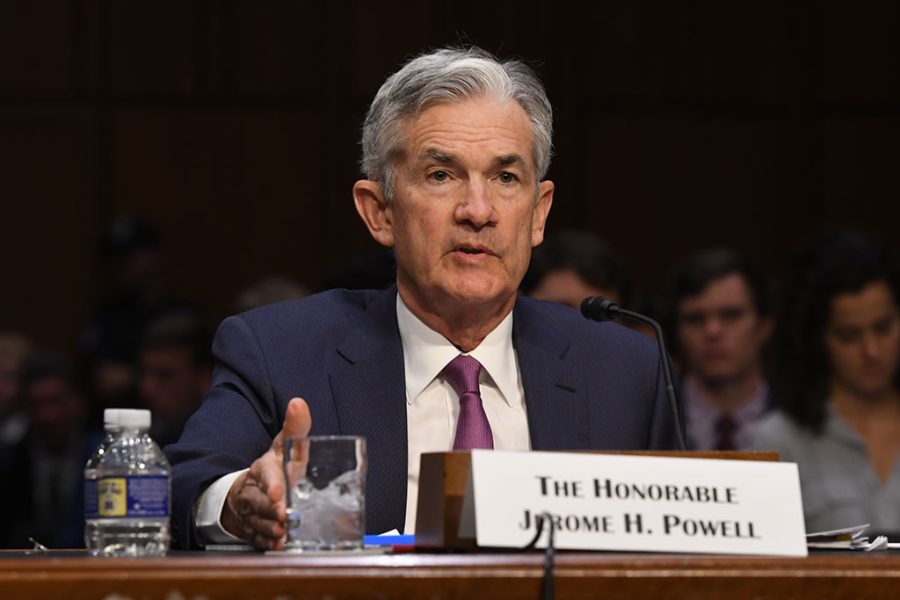Federal Reserve chair previews next rate hike at congressional testimony
March 20, 2023
Federal Reserve Chair Jerome Powell discussed the likelihood of the next rate hike path that the central bank will take at its March 22 meeting while he testified throughout a two-day hearing.
Giving his semiannual monetary policy report on Capitol Hill, the Fed chair appeared before the U.S. Senate Committee on Banking, Housing and Urban Affairs on March 7. He delivered “identical remarks” to the U.S. House of Representatives Committee on Financial Services on March 8.
Powell mentioned that if economic data showed a need for faster tightening, the Fed may undertake rate hikes that are larger than initially anticipated. This more stringent monetary policy could have a slowing effect on a growing economy.
The central bank announced a 25-basis-point rate hike at its Feb. 1 meeting after previously initiating a 50-basis-point increase in December 2022. The short-lived smaller rate hike is no longer on the table, and the Fed terminal rate of 5.1% is more likely to increase.
“The Federal Reserve’s march toward higher rates has now been accepted by markets as an inevitability,” Mortgage Capital Trading Chief Operating Officer Phil Rasori wrote, according to Barron’s.
Following Powell’s remarks, the stock market fell, with the Dow Jones Industrial Average losing 1.7%, the S&P 500 falling 1.5% and the Nasdaq composite lowering 1.25%.
On the other hand, the yield on the two-year Treasury note increased, surpassing 5% for the first time since July 2007.
Used by the Fed to measure inflation, the personal consumption expenditures price index for January reached 5.4%, which is better than previous records but higher than the Fed’s 2% goal.
Sen. Elizabeth Warren said that the Fed’s goal will result in the unemployment of 2 million people. Powell also faced some criticism from Democratic lawmakers who attributed inflation to corporate greed.
“I would explain to people, more broadly, that inflation is extremely high and that it is hurting the working people of this nation badly,” Powell said. “We’re taking the only measures we have to bring inflation down. Will working people be better off if we just walk away from our jobs if inflation remains at 5, 6%?”
The Fed increased its projections for the unemployment rate from 3.4% to 4.6%.
Many consumer loan instruments, including credit cards and mortgages, are affected by the Fed benchmark fund rate. This enables stronger hikes to put increased pressure on consumers.
For services other than housing, food and energy, Powell highlighted that there are indications of deflation. Stocks rose as a result.
The Fed chair called on Congress to raise the debt ceiling to avoid damage to the world economy.
Republican lawmakers have said that any such measure must be accompanied by significant cuts in spending.
Unless Congress raises the debt ceiling, it is predicted that the United States will default on its financial obligations this summer.
The economy has shown a surprisingly strong resilience despite inflationary pressures looming.
“If the totality of the data were to indicate that faster tightening is warranted, we would be prepared to increase the pace of rate hikes,” Powell said during his testimony.
Following Powell’s testimony, the U.S. Bureau of Labor Statistics released its February’s jobs report. The report signaled a more hawkish approach as hiring is robust, surpassing the expectation of 205,000 added jobs by 106,000. This was also accompanied by an increasing labor participation rate, but the stubborn labor market came as dismal news to the Fed.
But some good news for the Fed was the growth of the unemployment rate to 3.6%.
Labor is the main expense for service-based organizations, whereas costs associated with supply chains and volatile commodity prices are substantial for goods-producing industries.
Alongside the jobs report, the consumer price index and retail sales are factors that will determine the Fed’s path in its next meeting on March 22.
The extent of monetary tightening is yet to be seen as the economy experiences wage and price growth and high inflation following a period of stagnation.
Analysts believe Powell’s comments reflect a decline in the Fed’s confidence in its ability to lower inflation to the desired 2% objective in the upcoming years without inducing a recession.
The strong economy and consumers’ willingness to spend their spare money seem to have immunized the economy against the high rate hikes.
Currently, the central bank is still battling inflation, and the future course of the U.S. economy is not yet known. The Fed will instead base its judgments on the economic information released prior to each meeting.








